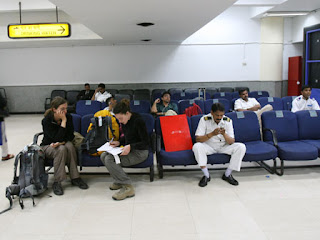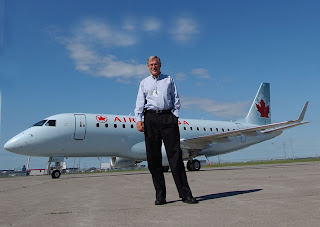 Last week was not a good one for ABX Air. On June 26, 2008 the Air Transport Services Group, parent company of ABX Air, announced in a press release that its principal business partner in the U.S., DHL, would release 23 ABX Air DC-9 aircraft from service between June 30, 2008 through December 31, 2008. This announcement reflects the first phase of DHL's intention, stated in May of this year, "to remove from service over next 12 to 18 months, 39 of 55 DC-9 aircraft that ABX Air has dedicated to DHL’s U.S. network."
Last week was not a good one for ABX Air. On June 26, 2008 the Air Transport Services Group, parent company of ABX Air, announced in a press release that its principal business partner in the U.S., DHL, would release 23 ABX Air DC-9 aircraft from service between June 30, 2008 through December 31, 2008. This announcement reflects the first phase of DHL's intention, stated in May of this year, "to remove from service over next 12 to 18 months, 39 of 55 DC-9 aircraft that ABX Air has dedicated to DHL’s U.S. network."In addition, DHL notified ABX Air that it had commenced negotiations with UPS that could lead to the assumption by UPS of substantially all of the services that ABX Air currently provides to DHL.
ABX Air says it also provides 31 Boeing 767 aircraft and related flight crews to DHL, however that number is likely reduced by one aircraft since Saturday, June 28. On the evening of that date, an ABX Air B767 in DHL livery caught fire on the ground at San Francisco International Airport (SFO) and appears to be substantially damaged, judging from post-fire photos posted on PBase.com.
According to a press advisory issued by the National Transportation Safety Board (NTSB) about the a fire that erupted aboard the parked B-767 cargo jet, this is what happened:
About 10:00 p.m. PDT, the flightcrew of a Boeing B-767 (N799AX), operated by Airborne Express as cargo flight 1611, reported smoke and fire just aft of cockpit while preparing to start the engines. The airplane was parked at the time, and all cargo had been loaded. Both flightcrew members exited the airplane safely via cockpit window. The airport rescue and fire fighting unit extinguished the fire; however, a hole had been burned through the crown of the aircraft above the forward galley area.The FAA preliminary report about the fire also stated that no injuries occurred.
Various news articles reported that the fire and smoke caused more than 100 people to be evacuated from a nearby building. Roads into the SFO airport were closed temporarily while emergency crews responded to the scene. Radio station KCBS reported on its website that it took firefighters two hours to extinguish the blaze.
[Photo Source]




























